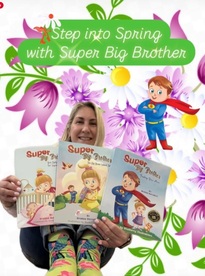When it comes to storytelling, the beginning and the end often leave the strongest impressions on readers and that’s where a prologue and an epilogue come into play. While they may sound similar, they serve very different purposes in shaping the reader’s experience. In this guide, we’ll define prologue and provide an easy-to-understand epilog definition, explaining how each functions in writing. Whether you’re an author polishing your manuscript or a reader curious about literary structure, understanding the distinction between a prologue and an epilogue can enrich your appreciation of any story.
Define Prologue
When authors or readers ask, “How do you define prologue?”, the answer is simple: a prologue is an opening section of a book that appears before the first chapter. Its job is to prepare the reader for the main story, often by introducing background details, a key event, or a tone that shapes the narrative. Unlike a regular chapter, the prologue is not meant to dive into the central plot right away—it acts as a stage-setter.
Purposes of a Prologue
A prologue is more than just an optional extra at the start of a book—it has a distinct purpose in storytelling. It serves as a gateway into the narrative, preparing readers for the journey ahead. By offering background details, setting the tone, or hinting at important events, the prologue helps create a foundation that makes the main story more engaging and easier to follow.
- The prologue can provide important background information that helps set up the story and prepare readers for what is to come.
- It may introduce an event that occurred before the timeline of Chapter One, giving readers valuable context about the plot or characters.
- A prologue often creates intrigue or suspense that draws the reader in and encourages them to continue reading.
- It can also establish the setting, tone, or atmosphere, offering readers a sense of the world in which the story takes place.
Example: In a fantasy novel, the prologue might recount an ancient battle, offering crucial context that explains the present-day conflict.
Example: In a mystery story, the prologue could depict the crime being committed, setting up suspense before the detective begins the investigation.
Example: In a romance novel, the prologue might show a meaningful encounter from the characters’ past, foreshadowing the relationship that develops later.
Example: In a thriller, the prologue could reveal a dangerous secret or event that looms over the entire story, creating tension from the very beginning.
Epilog Definition
When authors or readers ask, “What is the epilogue definition?”, the answer is clear: an epilogue is a concluding section of a book that comes after the final chapter. Its purpose is to wrap up loose ends, show what happens to the characters after the main events, or provide closure for the reader. Unlike the main chapters, the epilogue is not part of the central storyline—it acts as a bridge between the story’s ending and the reader’s sense of completion.
Purposes of an Epilogue
An epilogue serves as a thoughtful conclusion that gives the audience a glimpse beyond the final page. It can highlight the long-term consequences of the story, reveal how characters’ lives unfold, or leave readers with a lasting impression. By offering resolution or even a hint of future possibilities, the epilogue makes the reading experience feel complete and satisfying.
- The epilogue can show the outcome of events after the climax, giving readers closure about the story and its characters.
- It may reveal what happens months or years later, offering insight into the characters’ future lives.
- An epilogue can tie up unresolved plot points or answer lingering questions.
- It often provides an emotional or reflective conclusion, helping readers leave the story on a satisfying note.
Example: In a fantasy novel, the epilogue might describe how peace was restored to the kingdom years after the final battle.
Example: In a mystery novel, the epilogue could reveal how the detective moved on after solving the case, or what became of key characters.
Example: In a romance story, the epilogue might show the couple years later, happily married or starting a family.
Example: In a thriller, the epilogue could hint that the villain’s influence still lingers, leaving readers with a chilling final thought.
Prologue vs. Epilogue: Key Differences
| Feature | Prologue — Define Prologue | Epilogue — Epilog Definition |
|---|---|---|
| Placement | Beginning of the book | End of the book |
| Purpose | Introduces context or intrigue | Provides closure or future insight |
| Reader’s Role | Prepares the reader for the story to unfold | Leaves the reader with a sense of completion |
| Common in | Fantasy, mystery, thrillers, historical fiction | Romance, drama, sequels, and series |
Should You Use a Prologue or an Epilogue?
- Provide worldbuilding or history
- Introduce past events
- Create intrigue & suspense
- Tie up loose ends
- Show character futures
- Leave lasting themes
Practical Writing Tips for Prologues
Writing an effective prologue is often more challenging than it appears. While many new authors feel tempted to use the prologue as a place to unload background information or world-building details, the best prologues are concise, intriguing, and directly connected to the main story. A well-written prologue acts as a doorway—it invites readers into the book, sets expectations, and establishes tone, but it never replaces the actual beginning of the narrative. Below are some practical tips to help you craft a prologue that feels essential rather than optional.
- Keep it short and purposeful – A prologue should never feel like a textbook or an information dump. If you overwhelm readers with too much backstory, you risk losing their interest before the first chapter even begins. Instead, focus on the single most important detail, event, or perspective that the reader needs to know before entering the main storyline. Many successful prologues run only a few pages long, sometimes just a single scene. Think of it as a teaser—enough to spark interest, but not so much that it steals the thunder of Chapter One.
- Hook your audience – One of the main jobs of a prologue is to capture attention immediately. Start with action, conflict, or an intriguing moment that raises questions in the reader’s mind. A mysterious event, a dramatic flashback, or a voice from the future can all serve as strong hooks. The key is to make readers wonder: “How does this connect to the story?” That curiosity will drive them forward into Chapter One. If your prologue feels flat, predictable, or overly expository, readers may skip it altogether.
- Stay connected to the main plot – A common mistake is writing a prologue that feels like an entirely separate short story. While it can take place in a different time, place, or point of view than the main narrative, it must still tie into the central plot. For example, a fantasy prologue describing an ancient war should lay the groundwork for the present-day conflict. A mystery prologue showing a crime being committed must connect to the investigation that follows. If the link between prologue and story is too weak, readers may feel misled or confused.
- Avoid clichés and filler – Certain types of prologues have become so overused that they risk feeling tired. Dream sequences, long stretches of mythology, or prologues written only to dump exposition often frustrate readers rather than engage them. A prologue should never be added just because “books are supposed to have one.” If you find that your prologue doesn’t add anything unique or necessary to the story, consider cutting it entirely. A strong Chapter One is almost always better than a weak or unnecessary prologue.
Ultimately, the best prologues feel seamless—they enhance the reading experience without standing out as separate or forced. By keeping it concise, engaging, and directly tied to your central narrative, you ensure that readers will see the prologue as a valuable piece of the story rather than an optional prelude. When done well, a prologue sets the stage with intrigue, tone, and context, paving the way for a more immersive and compelling journey through your book.
Practical Writing Tips for Epilogues
Just as a prologue serves as an entry point into the story, an epilogue works as its graceful exit. It provides readers with closure, reflection, or even a glimpse of what lies ahead for the characters after the central conflict is resolved. However, not every book requires an epilogue. When used thoughtfully, it can leave a lasting impression, tying together threads that may otherwise feel incomplete. A poorly written epilogue, on the other hand, can feel unnecessary, repetitive, or even weaken the impact of the story’s ending. The key is to treat the epilogue as a complement, not an afterthought.
- Keep it concise and meaningful – An epilogue should not feel like a new chapter or an extended continuation of the story. Its purpose is to offer resolution in a few pages, not to reopen conflicts or drag the narrative forward unnecessarily. Brevity is important; focus on a single scene, reflection, or outcome that reinforces the emotional weight of the story. Readers should close the book feeling satisfied rather than overwhelmed with extra details.
- Show long-term consequences – One of the most effective uses of an epilogue is to reveal what happens after the dust has settled. This could mean showing how a character’s life has changed months or years later, or how the world has adjusted in the aftermath of a major event. Offering a glimpse into the future reassures readers that the story had meaning beyond its climax. For example, in a romance, an epilogue may show the couple married or raising children. In a fantasy, it might reveal how peace has been restored to a once-broken kingdom.
- Resolve unanswered questions – While the main chapters should handle the core conflicts, an epilogue can address smaller, lingering questions. Perhaps a side character’s fate is revealed, or a symbolic detail from earlier in the book is explained. By tying up these loose ends, the epilogue prevents readers from leaving the story with uncertainty that could lessen their satisfaction. However, avoid the temptation to explain everything in detail—part of the charm of an epilogue is its ability to provide closure without over-explaining.
- Maintain emotional resonance – An epilogue should leave readers with a strong emotional aftertaste. This might be a sense of peace, triumph, nostalgia, or even subtle unease if the author wishes to suggest that not everything is perfectly resolved. The best epilogues echo the themes of the book, reminding readers of the journey they have just experienced. A quiet reflection can sometimes be more powerful than a dramatic revelation.
- Hint at the future if appropriate – For books in a series, the epilogue can serve as a gentle transition into the next installment. A small detail, a hint of unfinished business, or a brief reappearance of a shadowy figure can spark curiosity without undermining the sense of closure. Balance is important: readers should feel the current story is complete even if more adventures await.
Ultimately, an epilogue is a storyteller’s chance to say a final goodbye to both the characters and the readers. When done well, it deepens the emotional impact of the ending, offers clarity, and ensures that the book lingers in the reader’s memory long after the last page is turned. By keeping it brief, purposeful, and connected to the themes of the story, the epilogue transforms from a simple add-on into a meaningful conclusion that enriches the entire reading experience.
Do All Stories Need Them?
Not every novel requires a prologue or an epilogue. Many stories stand perfectly on their own without these additional sections, beginning powerfully with Chapter One and ending with the final resolution. The decision to include a prologue or an epilogue should never be based on tradition, formula, or a sense that “books are supposed to have them.” Instead, the real question is whether these sections add meaningful value to the story and the reader’s experience. If they do, they can be powerful tools; if they don’t, they may distract, confuse, or even weaken the book as a whole.
A prologue is best used when there is crucial information or an event outside the main timeline that the reader must know before entering the story. For example, in a historical novel, the prologue might depict a pivotal battle or a generational secret that sets the stage for the present-day narrative. In a fantasy novel, it might introduce a prophecy or an ancient event that directly influences the characters’ struggles. However, if that information can be woven naturally into the first chapters, a prologue may not be necessary. A strong opening scene often does the work of drawing readers in without needing an additional preface.
Similarly, an epilogue should only be included if it offers something meaningful beyond the last chapter. The primary job of a conclusion is to resolve the central conflict, and many novels achieve this without any extra pages. An epilogue can, however, add emotional depth by showing how the characters’ lives unfold after the climax or by tying up smaller plot points that did not fit neatly into the main resolution. It can also serve as a bridge to a sequel, offering a glimpse of unfinished business or a hint of future challenges. But if the story already feels complete and satisfying, forcing an epilogue may lessen the impact of the ending.
Readers often have divided opinions about prologues and epilogues. Some enjoy them, finding that they add depth, suspense, or closure. Others admit to skipping them entirely, diving straight into Chapter One or closing the book as soon as the main story ends. This is why authors must carefully consider their purpose. A prologue or epilogue should never exist simply as filler—it should serve the story in a way that no other chapter could. If you find yourself struggling to justify its presence, that may be a sign the story is stronger without it.
Pros and Cons of Including a Prologue or Epilogue
- Pro: Provides important background or future insight that strengthens the narrative.
- Pro: Adds emotional resonance and gives readers a sense of closure or anticipation.
- Pro: Can build suspense at the start or leave a lasting impression at the end.
- Con: Risks feeling unnecessary or repetitive if the main story already stands strong.
- Con: Some readers skip them, which means important details may be missed.
- Con: Overuse of clichés in prologues or drawn-out epilogues can weaken the overall impact.
Ultimately, the best measure is to ask: Does this section enrich the narrative? Does it provide essential context, emotional resonance, or closure that the main chapters cannot deliver on their own? If the answer is yes, then a prologue or epilogue can transform the reading experience, making the story more memorable and impactful. But if the answer is no, trust your core narrative. A compelling beginning and a satisfying ending are more than enough to carry most stories without any additional framing. The choice rests with the author, guided by what serves the story—and the reader—best.
Famous Examples of Prologues and Epilogues
Looking at how published authors use them makes it easier to understand their role. Here are a few well-known examples:
- The Lord of the Rings – Prologue explains hobbits and sets up the world of Middle-earth; Epilogue shows Sam returning home after the quest.
- Romeo and Juliet – Prologue introduces the "star-crossed lovers" theme before the story begins.
- Harry Potter and the Deathly Hallows – Epilogue shows Harry and friends years later with their children, giving closure to the saga.
- The Da Vinci Code – Prologue starts with a dramatic murder in the Louvre, pulling readers instantly into the mystery.
Final Thoughts
To define prologue is to recognize its role as the doorway into a story. A prologue is not just an opening; it is an invitation that gently guides the reader into the fictional world or narrative landscape. Often, it sets the stage for events that the first chapter alone cannot explain. By introducing context, mood, or even foreshadowing, the prologue allows the audience to step into the book with curiosity and anticipation. Whether it reveals an ancient secret in a fantasy tale, introduces a crime in a mystery, or offers a glimpse into a character’s backstory, the prologue is a storyteller’s tool that primes the reader for what lies ahead.
The epilog definition, on the other hand, serves a complementary purpose at the opposite end of the book. Where the prologue opens doors, the epilogue gently closes them. It is the farewell note, the lingering thought, or the emotional aftertaste that remains when the main narrative has reached its conclusion. An epilogue may show how characters have grown, what has become of them after the climax, or how the story’s resolution resonates beyond the final chapter. In many cases, it reassures readers that the journey they invested in has meaning and closure. For example, in a romance novel, the epilogue might reveal the couple’s life years after they first met, while in a thriller, it may hint at unresolved dangers, keeping readers hooked even after the end.
When we define prologue and epilogue together, it becomes clear that they act as bookends, holding the narrative within a more structured, emotional frame. They are not mandatory elements, but when used with intention, they enrich the storytelling process. A well-crafted prologue prevents confusion by giving readers context, while a thoughtfully written epilogue ensures satisfaction by tying up loose threads or offering a glimpse into the future. Both sections work best when they add genuine value rather than simply repeating information already present in the chapters.
It is also important to note that both devices serve different genres in unique ways. In epic fantasy or historical fiction, the prologue might describe an ancient war or a cultural setting that grounds the reader in a different era. In contrast, contemporary fiction might use the epilogue to add emotional weight, showing a character’s growth years after the central conflict. The versatility of these sections makes them powerful when handled carefully. The key is to avoid overloading the prologue with too much information or making the epilogue too drawn out. Concise, purposeful writing ensures that these parts elevate rather than distract from the story.
In conclusion, to define prologue is to see it as the invitation to step into the narrative world, while the epilog definition reminds us that every journey benefits from a graceful ending. They are not required in every book, but when used thoughtfully, they make the reading experience more complete and memorable. Writers who embrace these tools are better equipped to shape how their stories begin and end, ensuring readers feel both welcomed and fulfilled in their journey through the pages.
FAQ: Prologue vs. Epilogue
-
Is an epilogue the same as a conclusion?
Not exactly. A conclusion wraps up the main story within the last chapter, while an epilogue goes beyond the ending to show what happens afterward.
-
How long should a prologue be?
A prologue should usually be short—often no more than a few pages. Its purpose is to intrigue, not to overwhelm with backstory.
-
Can I have both a prologue and an epilogue?
Yes. Many novels use both to frame the story. Just make sure each serves a distinct and valuable purpose.
-
Do readers skip prologues?
Sometimes, yes. That’s why it’s important to make your prologue engaging and directly connected to the main plot.
-
What is the purpose of a prologue?
A prologue sets the stage by giving readers background details, introducing a key event, or creating suspense that ties into the main story.
-
What is the purpose of an epilogue?
An epilogue provides closure by revealing what happens to the characters after the main story ends, often tying up loose ends or hinting at future events.
-
Do all books need a prologue or epilogue?
No. Many books work perfectly without them. Use these sections only if they genuinely add depth or clarity to your story.
-
Should a prologue or epilogue have the same tone as the story?
Not always. A prologue may use a different voice or perspective to set the scene, and an epilogue might shift tone to reflect closure, reflection, or future outlook.
-
Can an epilogue set up a sequel?
Yes. Many authors use epilogues to hint at new adventures, unresolved conflicts, or upcoming storylines in a series.
-
Where should I place the epilogue?
The epilogue always comes after the final chapter, acting as a final note before acknowledgments or additional content.








































































































